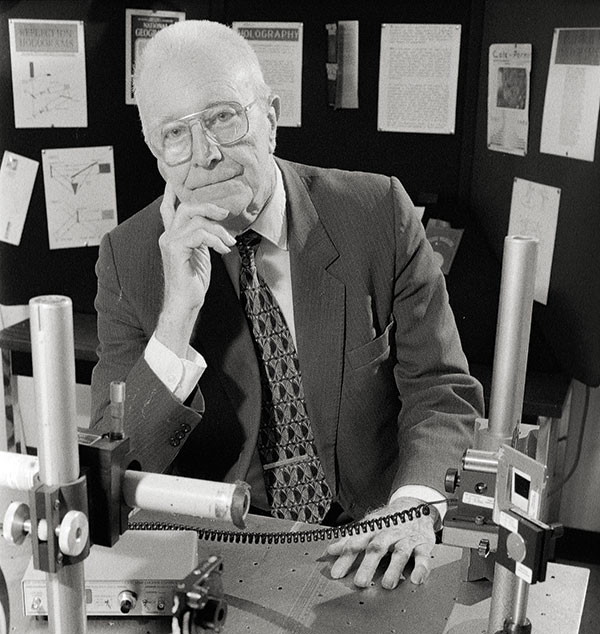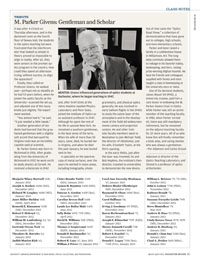Class Notes
 MENTOR: Givens influenced generations of optics students at Rochester, where he began teaching in 1947. (Photo: University Libraries/Department of Rare Books, Special Collections, and Preservation)
MENTOR: Givens influenced generations of optics students at Rochester, where he began teaching in 1947. (Photo: University Libraries/Department of Rare Books, Special Collections, and Preservation)It was after 4 o’clock on Thursday afternoon, and in the darkened room on the fourth floor of Dewey Hall, the students in the optics teaching lab were frustrated that the interferometer that looked so simple in theory proved so impossible to align in reality. After all, they were seniors in the premier optics program in the country. How could they spend all afternoon trying, without success, to align the apparatus?
Finally, they called on Professor Givens. He walked over—perhaps not as steadily as he had 53 years before, when he joined the optics faculty at the University—scanned the set up, and adjusted one of the many knobs just slightly. The experiment worked.
“You almost had it,” he said. “It just needed a little tweak.”
Another generation of students had learned that the gray-haired gentleman with a slightly soft accent that betrayed his Virginia roots was an incredibly capable optical scientist.
M. Parker Givens was born in Richmond in 1916. After graduating from the University of Richmond in 1937, he went north to study physics at Cornell. He received a doctorate in 1942 and, after brief stints at the Johns Hopkins Applied Physics Laboratory and Penn State, joined the Institute of Optics as an assistant professor in 1947. Although he spent the rest of his life in upstate New York, he remained a southern gentleman, in the best sense of the term. When his wife of more than 50 years, Gene, died, he buried her in Virginia, and when he died this past January, he was buried next to her.
A specialist on the spectroscopy of metal surfaces, over the years he worked in many areas, including holography, photogrammetry, and physical optics generally. He was involved in early balloon flights in the 1940s to study the ozone layer of the atmosphere and in the development of the Todd-AO widescreen movie camera and projection system. He and other institute faculty members went to Manhattan to join Michael Todd, the director of Oklahoma!, and his wife, Elizabeth Taylor, at the film’s opening.
In the early 1960s, just after the laser was invented, he and Bob Hopkins, the institute’s then director, traveled to universities to demonstrate the new device. Out of that came the “Optics Road Show,” a collection of demonstrations that have gone out to colleges, high schools, and even elementary schools.
Parker and Gene raised a family in a cobblestone house in Williamson, N.Y. The long daily commute allowed them to indulge in his favorite hobby, beekeeping, and hers, raising prize-winning Afghan hounds. He kept his friends and colleagues supplied with honey and even taught a class in beekeeping at the University once or twice.
One of his doctoral students, James Wyant ’69 (PhD), a University trustee, paid him a rare honor in endowing the M. Parker Givens Chair in Optics while Parker was still an active member of the teaching faculty. In 1981, when Parker turned 65, there was still mandatory retirement, but he remained on the adjunct teaching faculty for 22 more years. All of us who knew him will fondly remember a kind, wise, and caring mentor who was always a gentleman.
—Per Adamson and Carlos Stroud
Adamson is director of the Optics Teaching Laboratory, and Stroud is a professor of optics at Rochester.

